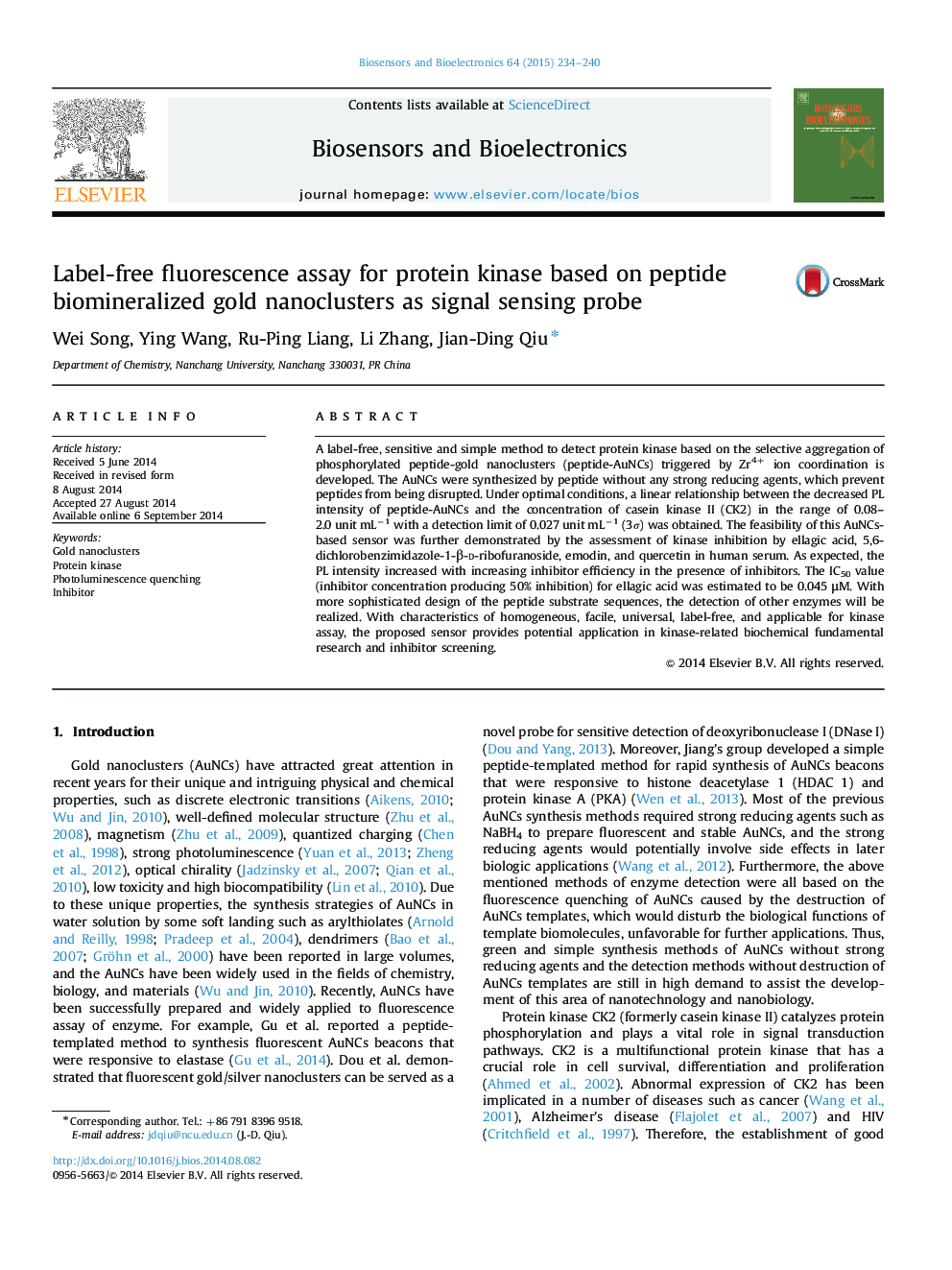| Article ID | Journal | Published Year | Pages | File Type |
|---|---|---|---|---|
| 7232886 | Biosensors and Bioelectronics | 2015 | 7 Pages |
Abstract
A label-free, sensitive and simple method to detect protein kinase based on the selective aggregation of phosphorylated peptide-gold nanoclusters (peptide-AuNCs) triggered by Zr4+ ion coordination is developed. The AuNCs were synthesized by peptide without any strong reducing agents, which prevent peptides from being disrupted. Under optimal conditions, a linear relationship between the decreased PL intensity of peptide-AuNCs and the concentration of casein kinase II (CK2) in the range of 0.08-2.0 unit mLâ1 with a detection limit of 0.027 unit mLâ1 (3Ï) was obtained. The feasibility of this AuNCs-based sensor was further demonstrated by the assessment of kinase inhibition by ellagic acid, 5,6-dichlorobenzimidazole-1-β-d-ribofuranoside, emodin, and quercetin in human serum. As expected, the PL intensity increased with increasing inhibitor efficiency in the presence of inhibitors. The IC50 value (inhibitor concentration producing 50% inhibition) for ellagic acid was estimated to be 0.045 μM. With more sophisticated design of the peptide substrate sequences, the detection of other enzymes will be realized. With characteristics of homogeneous, facile, universal, label-free, and applicable for kinase assay, the proposed sensor provides potential application in kinase-related biochemical fundamental research and inhibitor screening.
Related Topics
Physical Sciences and Engineering
Chemistry
Analytical Chemistry
Authors
Wei Song, Ying Wang, Ru-Ping Liang, Li Zhang, Jian-Ding Qiu,
